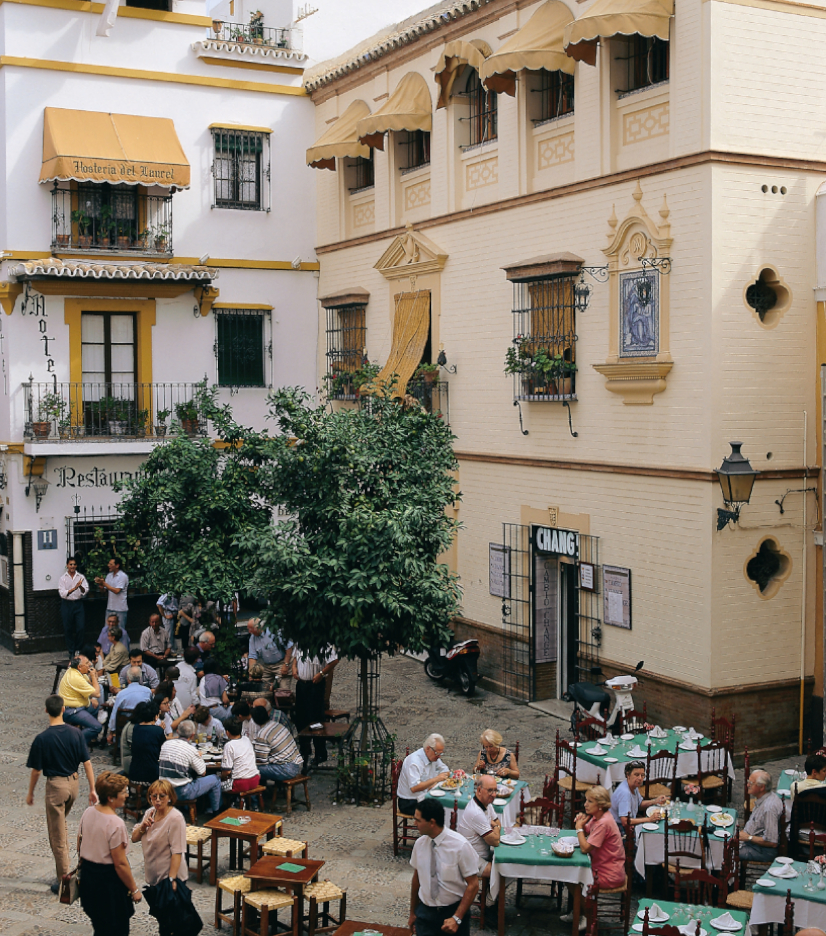Introduction to Spain for Foodies

From tapas bars in London’s hippest enclaves to Michelin-starred Spanish chefs topping the World’s Best Restaurant lists, Spanish food has become the flavour of the moment over recent years. Once something of a poor and unloved stay-at-home sister to its chic cordon bleu neighbour in France, it is now enjoying a well-deserved place on the international stage.
The star of the Spanish food show is undoubtedly the quality of the produce and it is that very quality which characterises the regionally rich and varied cuisine of Spain.
San Sebastian is the destination of choice for serious foodies who, armed with pocket guides and insider tips, can enjoy a Basque city that boasts more Michelin stars per capita than virtually anywhere else in the world.
For those with more modest budgets but equally keen appetites, the many bars and restaurants offer a dizzyingly high standard of fare to locals – and lucky visitors, with exacting gourmet demands.
The city’s coastal location on the Bay of Biscay guarantees a steady supply of sparklingly fresh seafood and the dozens of bars offering pintxos (the local variant on the ubiquitous tapas) vie with each other to produce the most creative and imaginative morsels.
Moving over to Spain’s easterly Mediterranean coast, Barcelona and the Costa Brava: just to its north, is the other corner of Spain with a phenomenally high concentration of Michelin-starred restaurants and exceptional cooking.
The Costa Brava was, after all, home to Ferran Adrià’s legendary El Bulli and is still home to El Celler de Can Roca – repeatedly voted the top restaurant in the world.
Meanwhile, although Madrid’s old town may not be as Instagram-friendly as San Sebastian, Barcelona or indeed the Costa Brava, the purchasing power of the city’s restaurant and hotel proprietors and the variety of the city’s outstanding food markets mean that some of the finest produce in Spain is on offer here.
Madrileños love nothing better than a ‘cocido’ – a rich and filling stew featuring chickpeas and a variety of meats as its star ingredients. Its origins are disputed, but the smart money is on it being of Sephardic Jewish origin and for the real cocido deal, look no further than the Spanish capital’s old town where you will find the dish on many a menu. Tuck in with a glass – or several, of inky red wine.
Heading south, Seville’s Santa Cruz barrio is one of the liveliest and indeed loveliest parts of a picture postcard pretty city and its tightly winding side streets are home to some of the finest tapas bars.
The options are endless, but the crisply fried fish is both exquisite and moreish, particularly when paired with an ice-cold glass of the local Cruzcampo beer or the bone-dry sherries of nearby Cádiz. Or, for a change, head to the leafy Maria Luisa park for some welcome shade from the intense Sevillano heat and a cooling glass of the local crushed-ice concoction that is a granizado de limon.
For the most Spanish dish of them all – paella, look no further than Valencia, where the dish originated. Paella-making is an art around these parts and, once you have tasted one there, you will never accept being palmed off with substandard tourist offerings elsewhere again.
The original, rustic countryside version – and to any food connoisseur’s mind, the best – features chicken or rabbit with snails. Locals also swear by the sweet, milky white, tiger-nut based drink Horchata, to cool you down.
Further north, La Rioja may be most famous for its wines but the capital of the region – Logroño – is home to one of the most vibrant tapas cultures in the country. The
miniscule medieval streets of the old town are home to an extraordinarily high concentration of bars offering small plates of tasty morsels, from sizzling sardines to garlicky prawns. Competition is rife and standards are accordingly high, so although the title of Spain’s finest tapas destination may be hotly contested, Logroño
can unquestionably throw its hat into the ring with the best of them.
But for the chef’s choice of seafood, from oysters to cockles and clams, look no further than Galicia. Over on Spain’s western coast, the Rias Baixas or ‘low rivers’ form a dramatic backdrop to a region that is sometimes unfairly neglected. Crisp Albarino wines enjoy pride of place on restaurant tables here and the local seafood they accompany is arguably the finest in Spain.
As they say in Spain – que aproveche!
Subscribe to Our Newsletter
Receive our monthly newsletter by email





